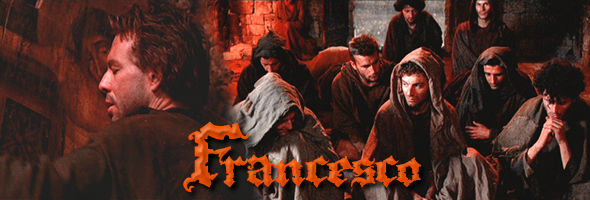
Color, 1989, 146m. / Directed by Liliana Cavani / Starring Mickey Rourke, Helena Bonham Carter / Istituto Luce (Italy R2 PAL) / WS (1.66:1) (16:9) / DD5.1, Simitar (US R1 NTSC) / DD2.0 Color, 2003, 105m. / Directed by Liliana Cavani / Starring John Malkovich, Dougray Scott / 01Distributo (Italy R2 PAL) / WS (1.85:1) (16:9) / DD5.1
A gritty alternative to Franco Zeffirelli's Brother Sun, Sister Moon, this odd but fascinating biopic of Fracesco/St. Francis utilizes a Citizen Kane-style structure to study the saint's impact on
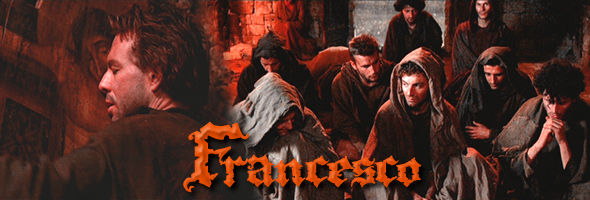 western religion and his followers. Of course, it's also a Liliana Cavani film, which means plenty of peculiar stylistic and narrative touches, not to mention the "unorthodox" casting of Mickey Rourke in the lead. Fortunately this was Mickey's last film before horrific facelifts and 1990's Wild Orchid plunged him into a pop culture abyss, and he nicely alternates anguish and benevolence throughout the complex storyline. After the mysterious death of Francesco (complete with miraculous stigmata), his disciple Clare (Helena Bonham Carter) meets with his other followers to put together the pieces of his life. His transition from wealthy son to poverty-espousing radical is filled with stories involving lepers, hypocritical church officials, and other plagues of medieval life.
western religion and his followers. Of course, it's also a Liliana Cavani film, which means plenty of peculiar stylistic and narrative touches, not to mention the "unorthodox" casting of Mickey Rourke in the lead. Fortunately this was Mickey's last film before horrific facelifts and 1990's Wild Orchid plunged him into a pop culture abyss, and he nicely alternates anguish and benevolence throughout the complex storyline. After the mysterious death of Francesco (complete with miraculous stigmata), his disciple Clare (Helena Bonham Carter) meets with his other followers to put together the pieces of his life. His transition from wealthy son to poverty-espousing radical is filled with stories involving lepers, hypocritical church officials, and other plagues of medieval life.
Dark and gothic, Francesco is a complete reversal of the traditional religious biopic, perhaps due to the fact that it's based (more or less) on a Hermann Hesse book. Any spiritual aspects are portrayed through emotional growth of the characters and the expressions visible in their faces; the film's ultimate message that noble actions and intentions are far more valuable than sitting around waiting for divine intervention is a fairly sophisticated approach that's much easier to swallow than standard Hollywood epics.
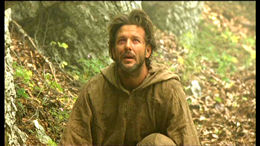 Cavani doesn't shy away from the more unpleasant aspects of Francesco's life, including the ugliest aspects of poverty and behavior bordering on insanity. Fortunately she has two very strong leads to carry the film, and the dreamy score by Vangelis casts an ethereal mood over the entire film. It doesn't work all the way through; many supporting performances are awkward, and the entire film stops dead for one dubious scene in which a naked Rourke, anachronistic tattoos painfully visible, frolics in the snow before scooping a mound of ice over his crotch. Really. The supporting cast plays like a who's who of European arthouse exploitation, including Italian horror staple Tomas Arana (The Church, Body Puzzle), Mario Adorf (The Bird with the Crystal Plumage, Lola), Edward Farrelly (Cut and Run), Andréa Ferréol (A Zed and Two Noughts), and Stanko Molnar (the blind neighbor from Lamberto Bava's Macabre). Interestingly, Francesco also features two alumni from Brother Sun, Sister Moon,
Cavani doesn't shy away from the more unpleasant aspects of Francesco's life, including the ugliest aspects of poverty and behavior bordering on insanity. Fortunately she has two very strong leads to carry the film, and the dreamy score by Vangelis casts an ethereal mood over the entire film. It doesn't work all the way through; many supporting performances are awkward, and the entire film stops dead for one dubious scene in which a naked Rourke, anachronistic tattoos painfully visible, frolics in the snow before scooping a mound of ice over his crotch. Really. The supporting cast plays like a who's who of European arthouse exploitation, including Italian horror staple Tomas Arana (The Church, Body Puzzle), Mario Adorf (The Bird with the Crystal Plumage, Lola), Edward Farrelly (Cut and Run), Andréa Ferréol (A Zed and Two Noughts), and Stanko Molnar (the blind neighbor from Lamberto Bava's Macabre). Interestingly, Francesco also features two alumni from Brother Sun, Sister Moon, 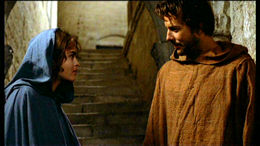 cinematographer Ennio Guarnier and production/costume designer Danilo Donati, though the results here are quite different.
cinematographer Ennio Guarnier and production/costume designer Danilo Donati, though the results here are quite different.
Despite its pedigree, Francesco went straight to video in many territoires including a lackluster DVD release in the US, courtesy of the late and not lamented Simitar. Shorn of 28 minutes of footage, the US disc is badly edited and feels like a rushed hack job, exacerbated by a colorless, murky transfer and a flat, mediocre sound mix. The full-length cut is available on Italian DVD, nicely letterboxed and featuring an appealing widescreen transfer with deep, saturated blacks and excellent color fidelity (considering that gold and brown dominate almost every scene). The anamorphic 1.66:1 framing is preserved with bars on the left and right side of the frame, barely visible on many monitors. The Italian soundtrack (with optional English subtitles) is presented with 5.1 and 2.0 options; the former sounds gimmicky and forced, with dialogue often artificially split among the different channels, while the latter sounds natural and rich. Of course, it takes a while to get used to Rourke and Carter mouthing Italian, but the effort is worth it.
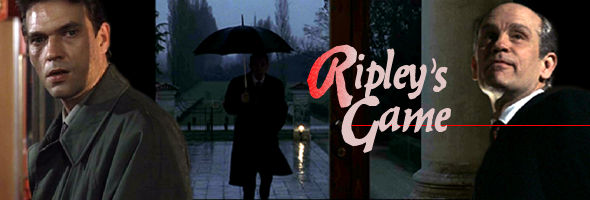
One of the great anti-heroes of modern mystery fiction, Patricia Highsmith's Tom Ripley has undergone an odd film trend, with a notable European director making an art house version of a novel before it's remade in English decades later. The first entry, The Talented Mr. Ripley, became René Clément's Purple Noon and then
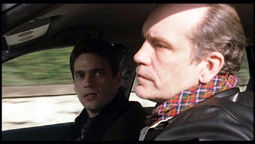 Anthony Minghella's adaptation with Matt Damon under the original title; then Wim Wenders turned Ripley's Game into The American Friend, followed by this version from Liliana Cavani, again using the book's title. Offering the most accurate and multi-layered cinematic Ripley to date, John Malkovich (who, oddly enough, held together Wenders' sequences in Beyond the Clouds) captures the amoral, emotionally austere attraction of this murderous but charming sociopath, who influenced decades of cultivated but disturbed creations leading up logically enough to Hannibal Lecter. Our tale beings in Italy as Ripley embarks on a shady art deal with the help of none-too-bright Reeves (Sexy Beast's excellent Ray Winstone). Ripley's sudden decision to up his price leads to a murderous payoff, leaving Reeves in the dust but holding a briefcase filled with cash. Three years later, Ripley has retired to the sidelines and lives a married life with harpsichord player Luisa (Sleepless' Chiara Caselli). Reeves arrives on the scene and offers Tom $50,000 to kill off Reeves' underworld rival, a Berlin nightclub owner. Ripley balks, insisting that only an innocent could be recruited to perform such a task. Fortunately Ripley is quickly inspired when he learns that his English neighbor, picture framer Jonathan Trevanny (Dougray Scott), is dying of leukemia and spending his final days in peace with his wife, Sarah (Lena Headey). Reeves approaches Jonathan with the offer and is quickly refused; however, Ripley decides to double the amount
Anthony Minghella's adaptation with Matt Damon under the original title; then Wim Wenders turned Ripley's Game into The American Friend, followed by this version from Liliana Cavani, again using the book's title. Offering the most accurate and multi-layered cinematic Ripley to date, John Malkovich (who, oddly enough, held together Wenders' sequences in Beyond the Clouds) captures the amoral, emotionally austere attraction of this murderous but charming sociopath, who influenced decades of cultivated but disturbed creations leading up logically enough to Hannibal Lecter. Our tale beings in Italy as Ripley embarks on a shady art deal with the help of none-too-bright Reeves (Sexy Beast's excellent Ray Winstone). Ripley's sudden decision to up his price leads to a murderous payoff, leaving Reeves in the dust but holding a briefcase filled with cash. Three years later, Ripley has retired to the sidelines and lives a married life with harpsichord player Luisa (Sleepless' Chiara Caselli). Reeves arrives on the scene and offers Tom $50,000 to kill off Reeves' underworld rival, a Berlin nightclub owner. Ripley balks, insisting that only an innocent could be recruited to perform such a task. Fortunately Ripley is quickly inspired when he learns that his English neighbor, picture framer Jonathan Trevanny (Dougray Scott), is dying of leukemia and spending his final days in peace with his wife, Sarah (Lena Headey). Reeves approaches Jonathan with the offer and is quickly refused; however, Ripley decides to double the amount  himself for the sheer pleasure of twisting a good, honest man into an assassin.
himself for the sheer pleasure of twisting a good, honest man into an assassin.
While Wenders' magnificent film focused on the plight of Jonathan as a sort of metaphor for Germany's political situation at the time, with Dennis Hopper's Ripley functioning as more of a cockeyed supporting character, Cavani's film balances equally between the two men. Shifting the location to Italy from the novel's France, this version benefits greatly from Malkovich's presence; he's in full venomous mode, previously used to good effect in Dangerous Liaisons (and in the more compromised Portrait of a Lady and Mary Reilly). He's most terrifying in the non-violent passages, such as a pivotal early sequence in which he overhears Jonathan's social put-down at a dinner party and immediately dominates the room by simply repeating the word "Meaning?" over and over. Cavani's chilly directorial style suits the material well (despite rumors of trouble during production), and while this is nowhere close to the Wenders film as a directorial statement, this is more enjoyable as a luxurious thriller,
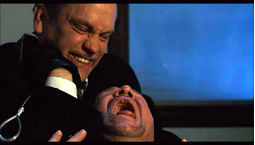 filled with twists, marvelous scenery, and meaty acting. Ennio Morricone's delicious harpsichord-flavored score is a jittery treat, and apart from the bumpy opening scene and a few minor stumbles near the end, the script effectively balances mordant wit with grueling suspense, particularly a tense, From Russia with Love-style train sequence that delivers in spades.
filled with twists, marvelous scenery, and meaty acting. Ennio Morricone's delicious harpsichord-flavored score is a jittery treat, and apart from the bumpy opening scene and a few minor stumbles near the end, the script effectively balances mordant wit with grueling suspense, particularly a tense, From Russia with Love-style train sequence that delivers in spades.
Co-financed by New Line, this film was first released in Europe but inexplicably dropped from the US release schedule at the last minute. One can only wonder why, as this is certainly a worthy title and boasts an impressive pedigree. With no American release in sight, curious viewers can check out the glossy Italian DVD, which features 5.1 audio for both the original English and Italian-dubbed audio tracks, with optional English subtitles in both languages as well. The anamoprhic picture is pristine and beautiful to behold; the titles are in Italian, but otherwise this is an English-friendly variant. It would still be nice to see this in a theater, however, so hopefully New Line will think twice about any plans to shuffle this off to the cable graveyard. Extras include the Italian trailer (non-anamorphic) and a still gallery. Another Ripley adaptation, Ripley Under Ground, was set to open in 2004 under the title White on White, starring Barry Pepper as Ripley, but only received a nominal home video release in Europe.
![]()